Europe's New Borders
As a child of the 1980s, I remember the holiday trips in our gray Audi 80 to Spain with the family, I was sitting in the passenger seat beside my father with the map that covered the entire windshield when it was unfolded. When we stopped and took a small break my dad showed me the borders on the map, and told about the different countries and cities. When you crossed the border it felt like a new world — when I, as a child, suddenly heard German, French, and Spanish words for the first time, or I was allowed, on rare occasions, to hand over our passports to the border police when we crossed. March 26, 1995, was the end of using our passports through Europe; when the Schengen Treaty was implemented, almost 10 years after the first had been signed, Europe suddenly seemed a little more united, and free.
Borders are something that is difficult to define for those of us who have never experienced war or unfriendliness in the European countries, and with both the Schengen agreement and EU enlargement in the early 2000s, the borders had become increasingly blurred in our consciousness — until 2015.
Fences, barbed wire, and armed militant border guards have suddenly become the new standard in Europe, and as I, in the early summer of 2015, was watching all the physical manifestations and transformation of something I thought belonged to the past, I decided to photograph these “new” European borders and what consequences they have and will have for Europe and the hundreds of thousands of refugees and migrants who these days come to our borders. All this was done using a technology developed by the military: the drone.
My project, Europe’s New Borders, offers a sense of scale on the dehumanized border crisis unfolding in Europe throughout the last two years. It covers most of the borders of the European Union, the transformation of these, and the consequences, big and small, concrete and abstract, for the refugees and migrants.

A small rubber dinghy arrives on the coast of Greek island Lesbos. The island have seen hundred of thousands of migrants and refugees arrive from Turkey in 2015.
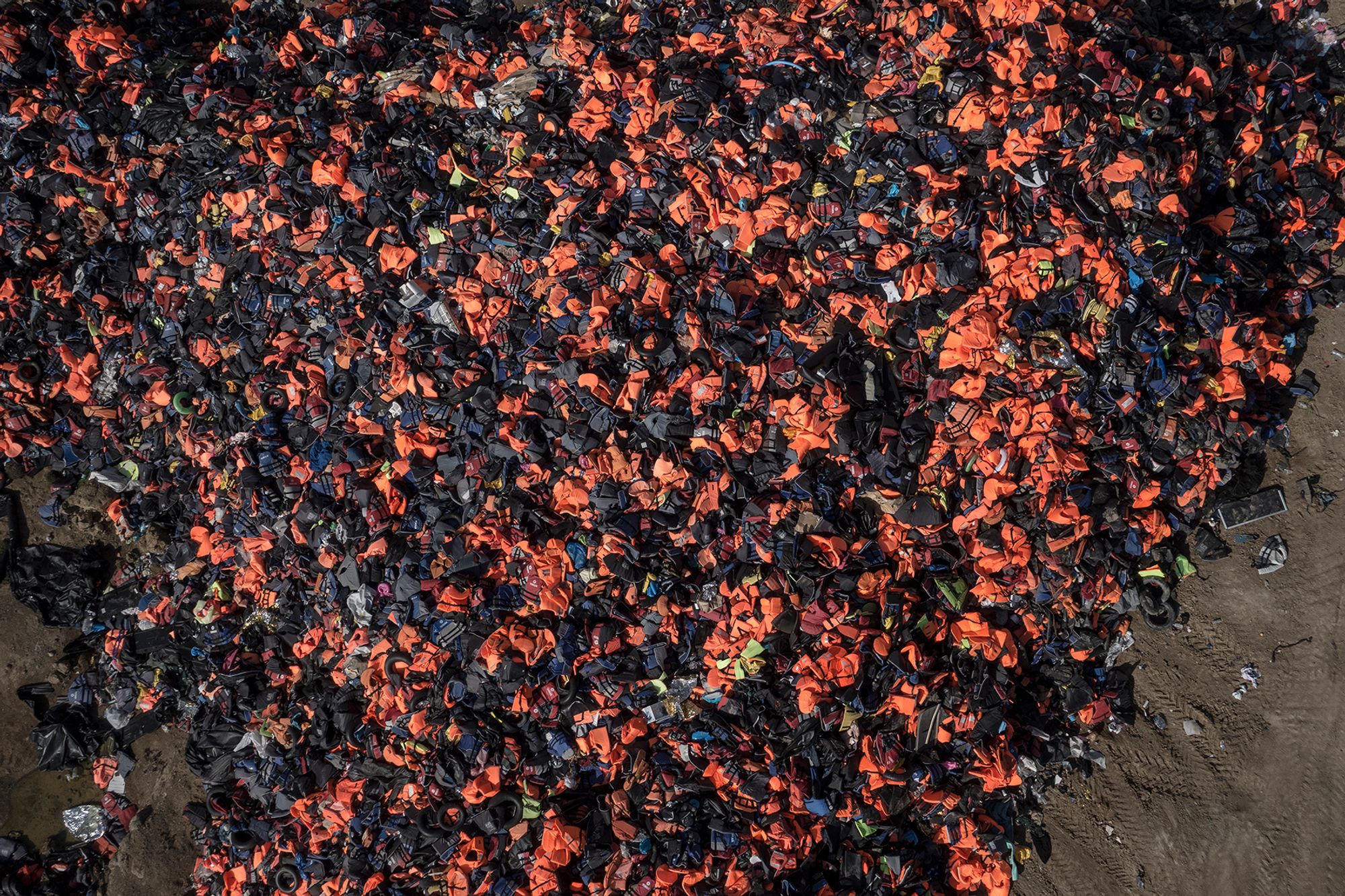
Over 100.000 life vests and rubber boats lie in a almost 10 meter high pile on the island of Lesbos, Greece. in 2015 Greece received well over 800.000 refugees and migrants. All primarily arriving with boat over the Aegean ocean.
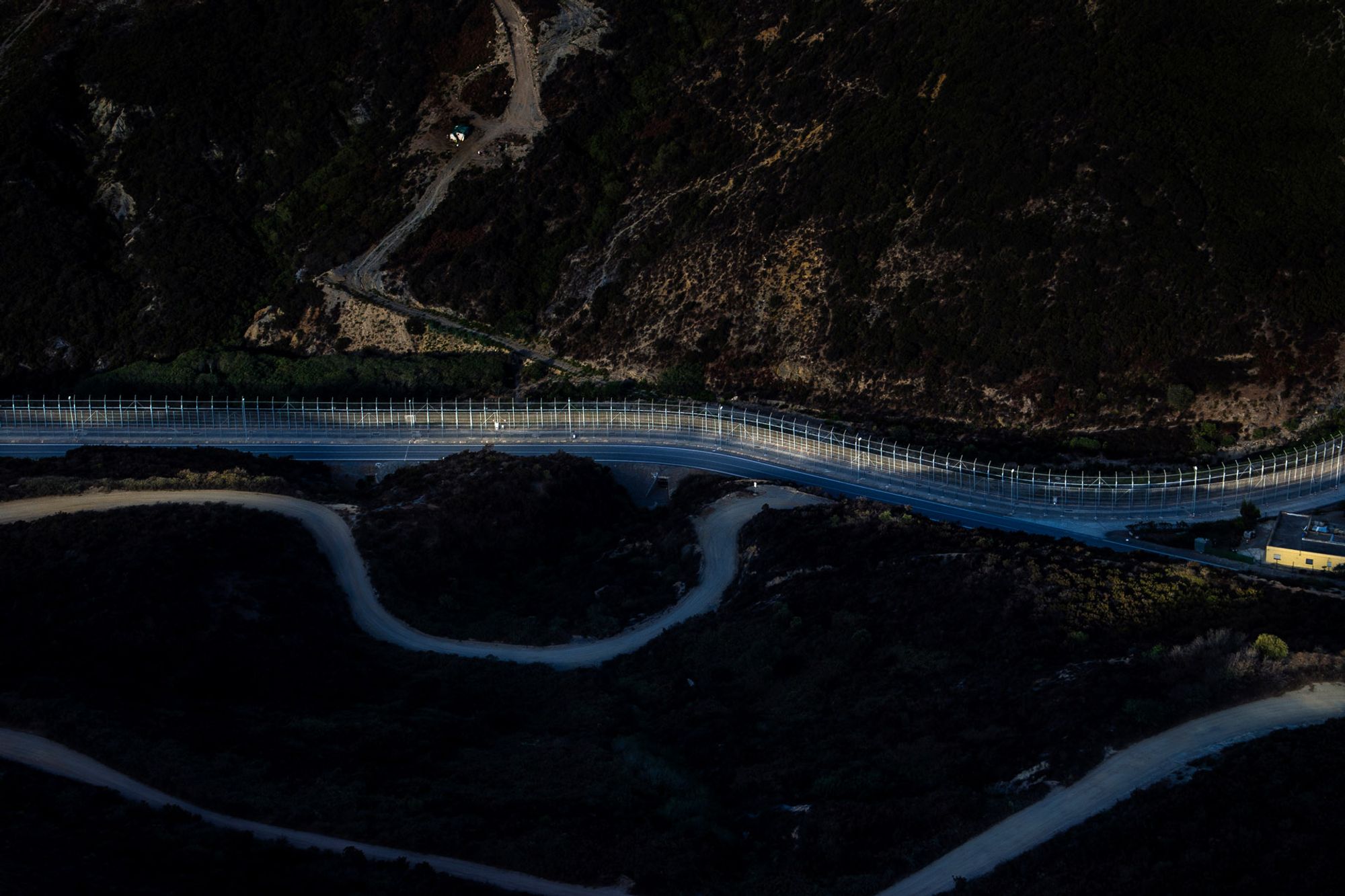
The borderfence in Ceuta, Spain early morning 7. September 2016. The fence is a 6 meterhigh parallel fence towards Morocco keeping sub-Saharan migrants and refugees out. Thefence has barbed wire, watchposts, sound sensors, motion sensors, lights, cameras,patrolling guards on foot, in cars, in the hills, at sea in boats. It was first built in 1993, raisedheight in 1995 and again in 2005 to what it is today. Its is the ground zero of EuropeanBorder control.
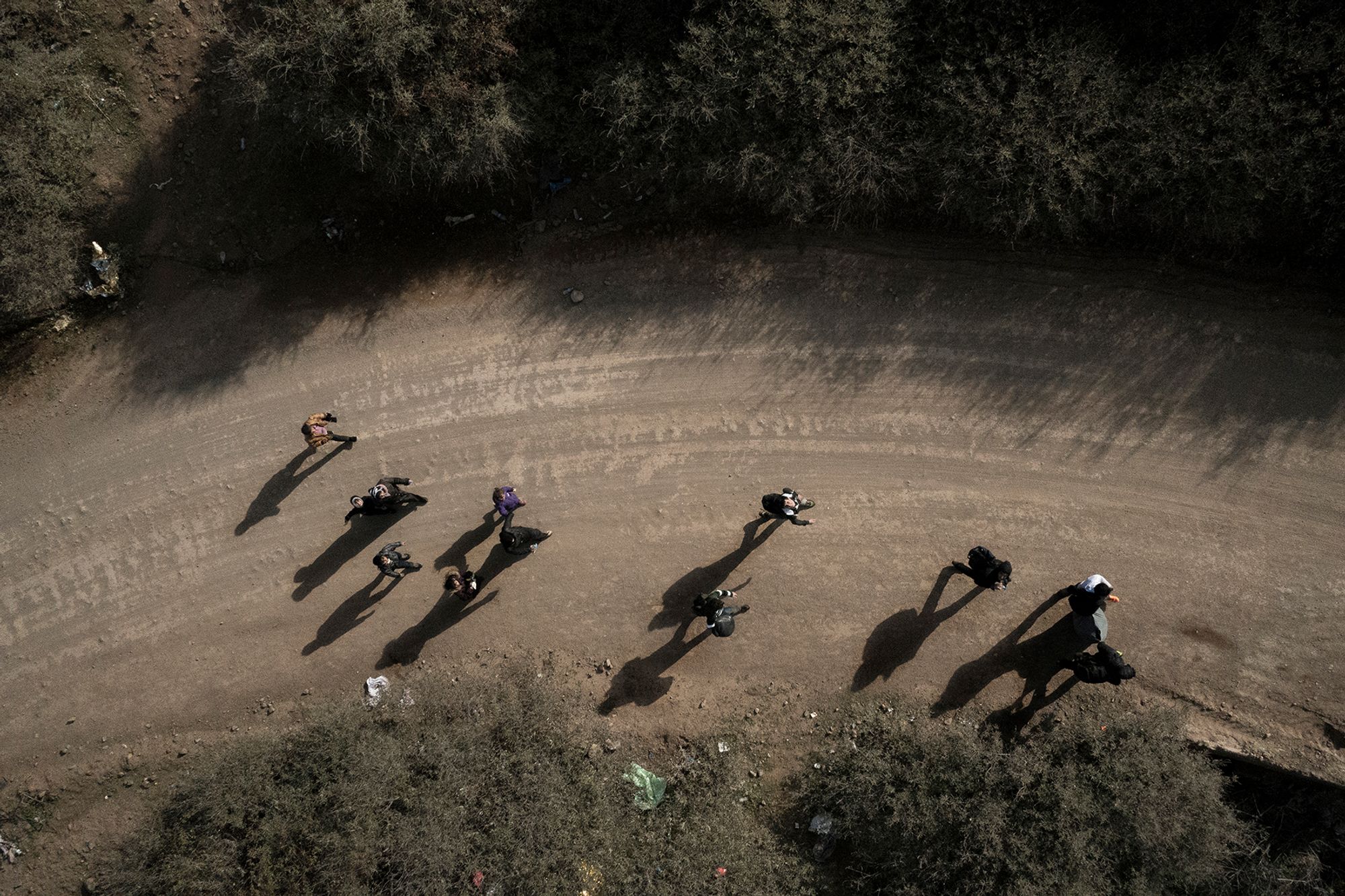
A group of Syrian refugees from Aleppo walks on the dirty track along the beach on Lesbos. The refugees have just arrived with boat from Turkey.

Refugees and migrants rest at the private funded camp OXY outside the town Molyvos on Lesbos, Greece. The island have received hundreds of thousands of migrants and refugees in 2015, but have received little official help, nor established a reception center on the north coast where most arrive. This private funded camp make sure the migrants doesn't have to walk the almost 60 km to the receptioncenter outside Mytilini city.
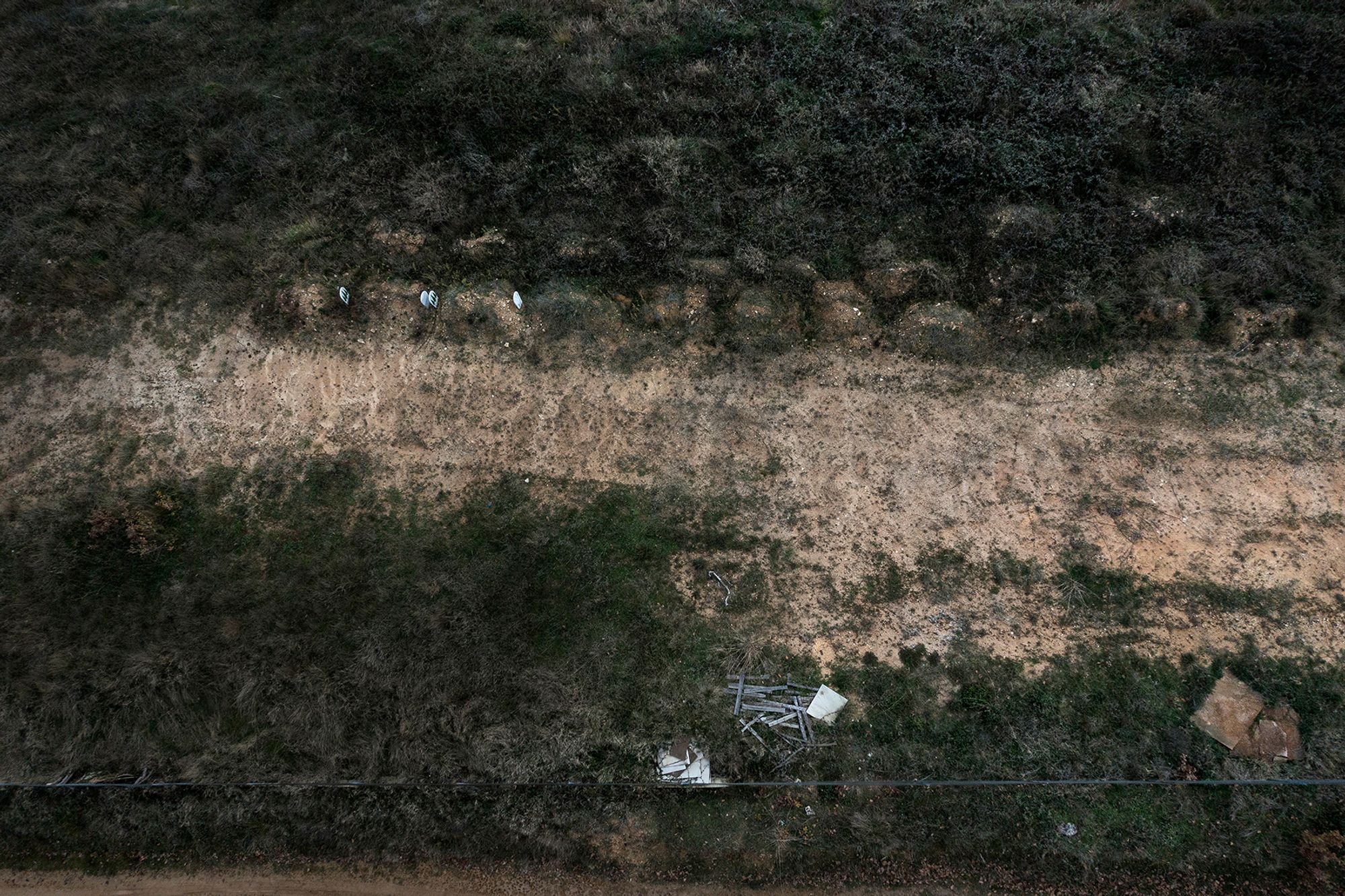
A refugee and migrant massgrave at the border between Greece and Turkey along the Evros River. There are no official record of the bodies buried here but estimates mark it as 450. Most of the bodies are never identified, only two are marked with tombstones and clear names. The gravesite is unmarked and fenced.
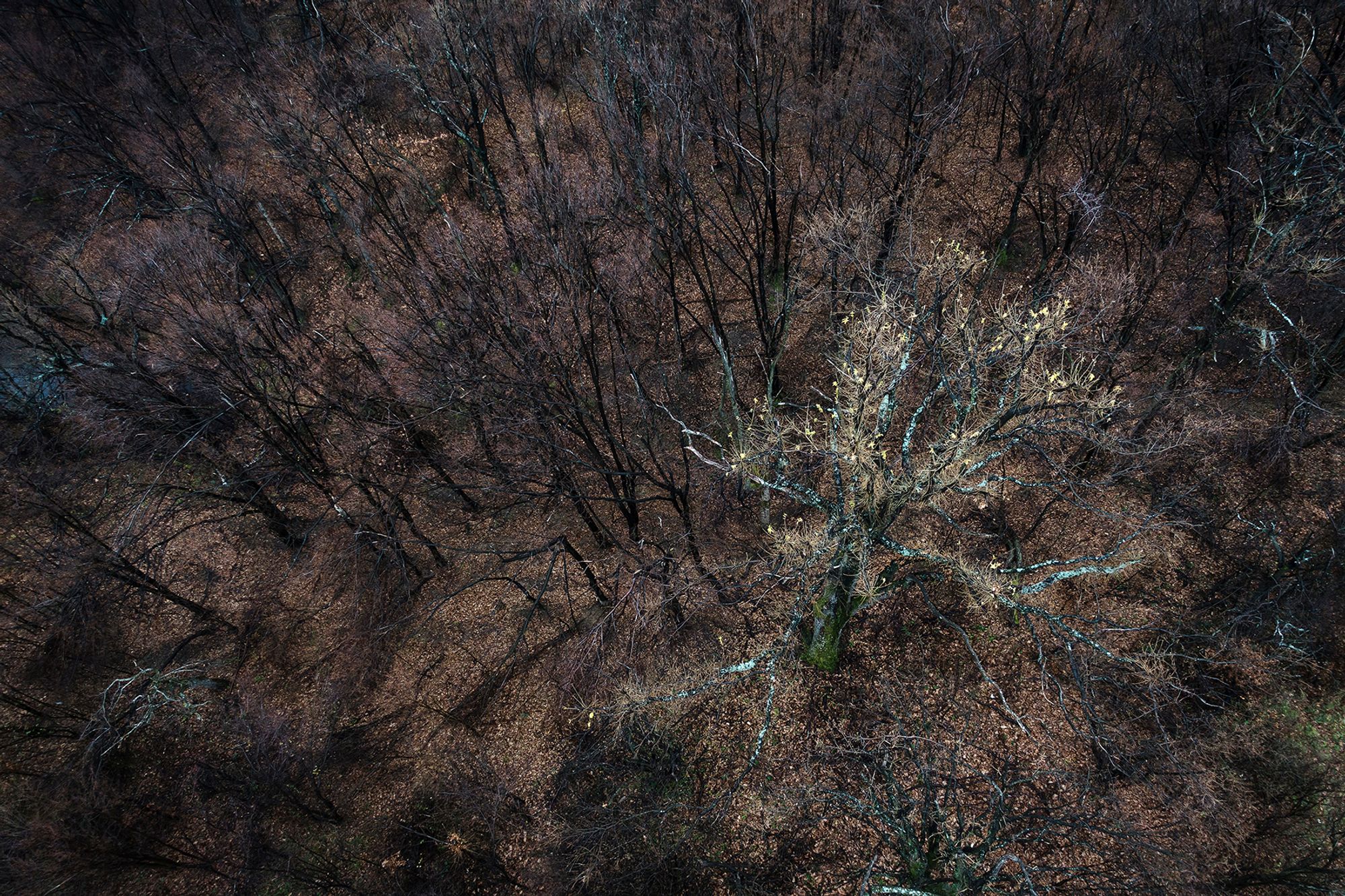
In this forest four Afghan asylum seekers froze to death in November 2014. The men were found on the border between Bulgaria and Serbia outside the town of Kireevo. The four Afghan men were in the process of obtaining refugee status but tried to cross the border, and in the harsh cold weather and fog they got lost and froze to death.

An afghan family crosses the border between Macedonia and Serbia near Tabanosce.
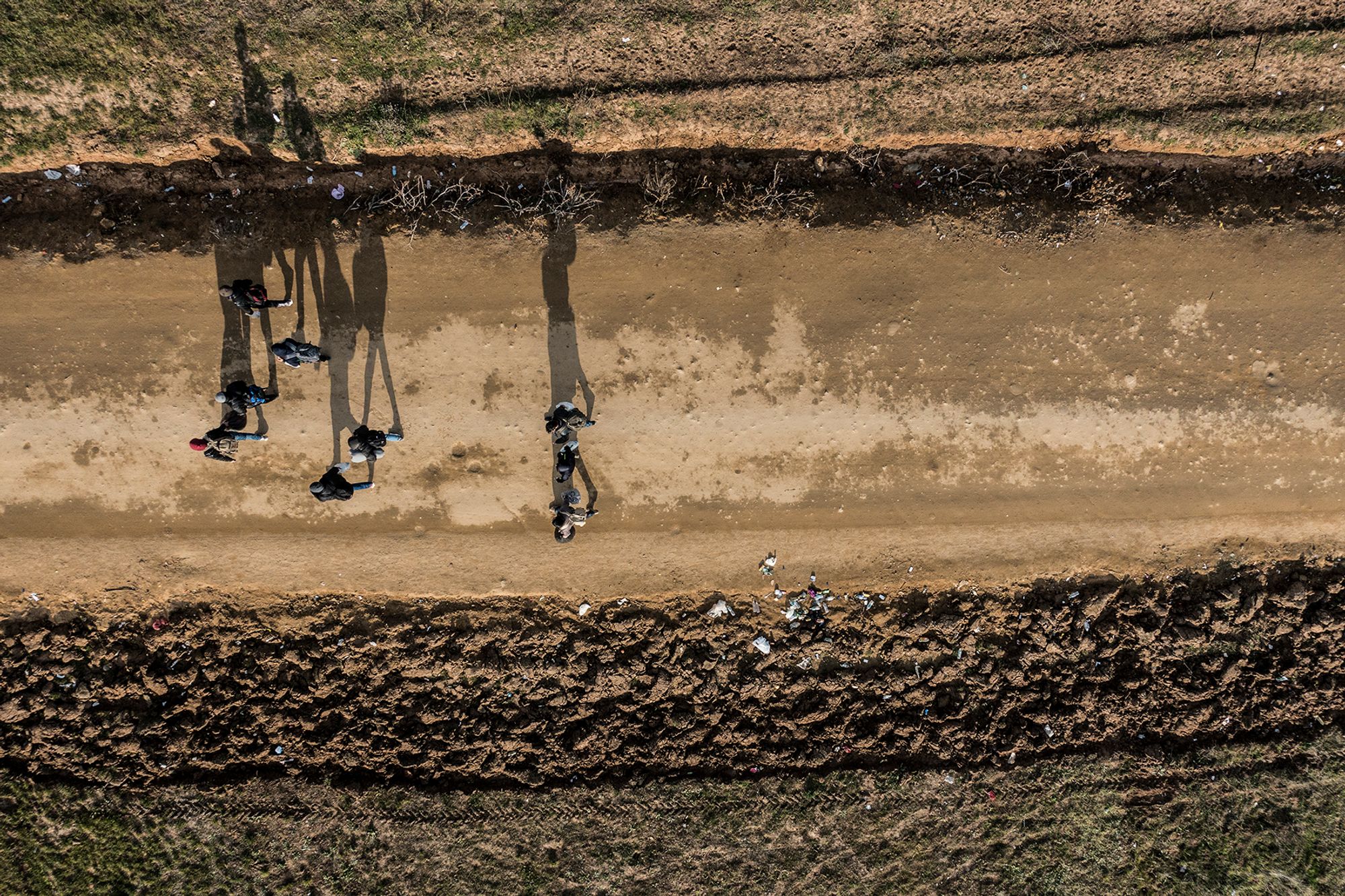
A group of young afghan boys and girls walk along the dirt road after crossing the border into Serbia.
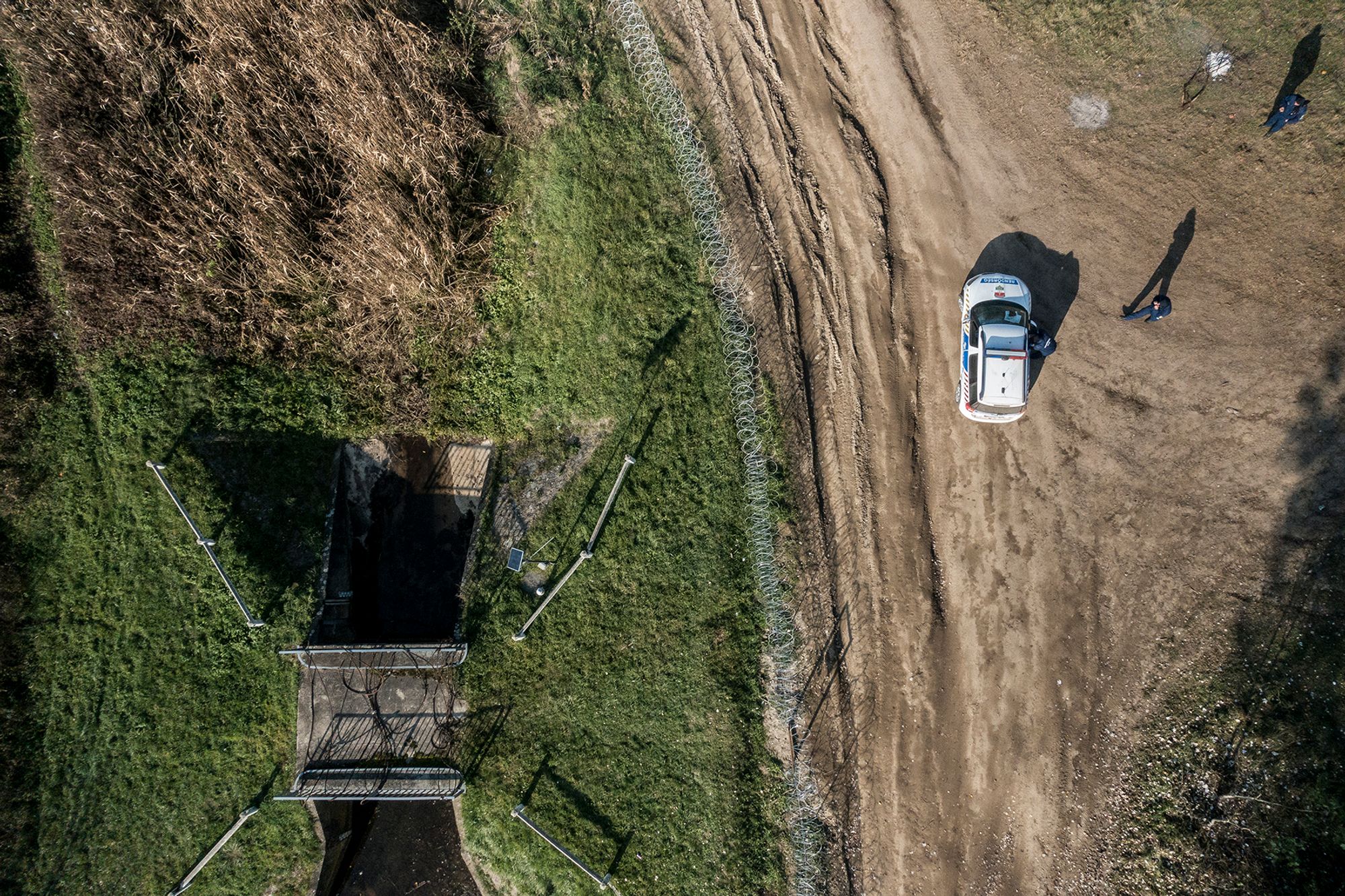
Hungarian border police patrols the newly made border fence to Serbia. On September 14th Hungary saw over 10.000 refugees and migrants cross over their borders and the same day they completed their border fence and cracked down on anyone trying to cross illegally into the country. Now numbers are down to under 100 pr. day.
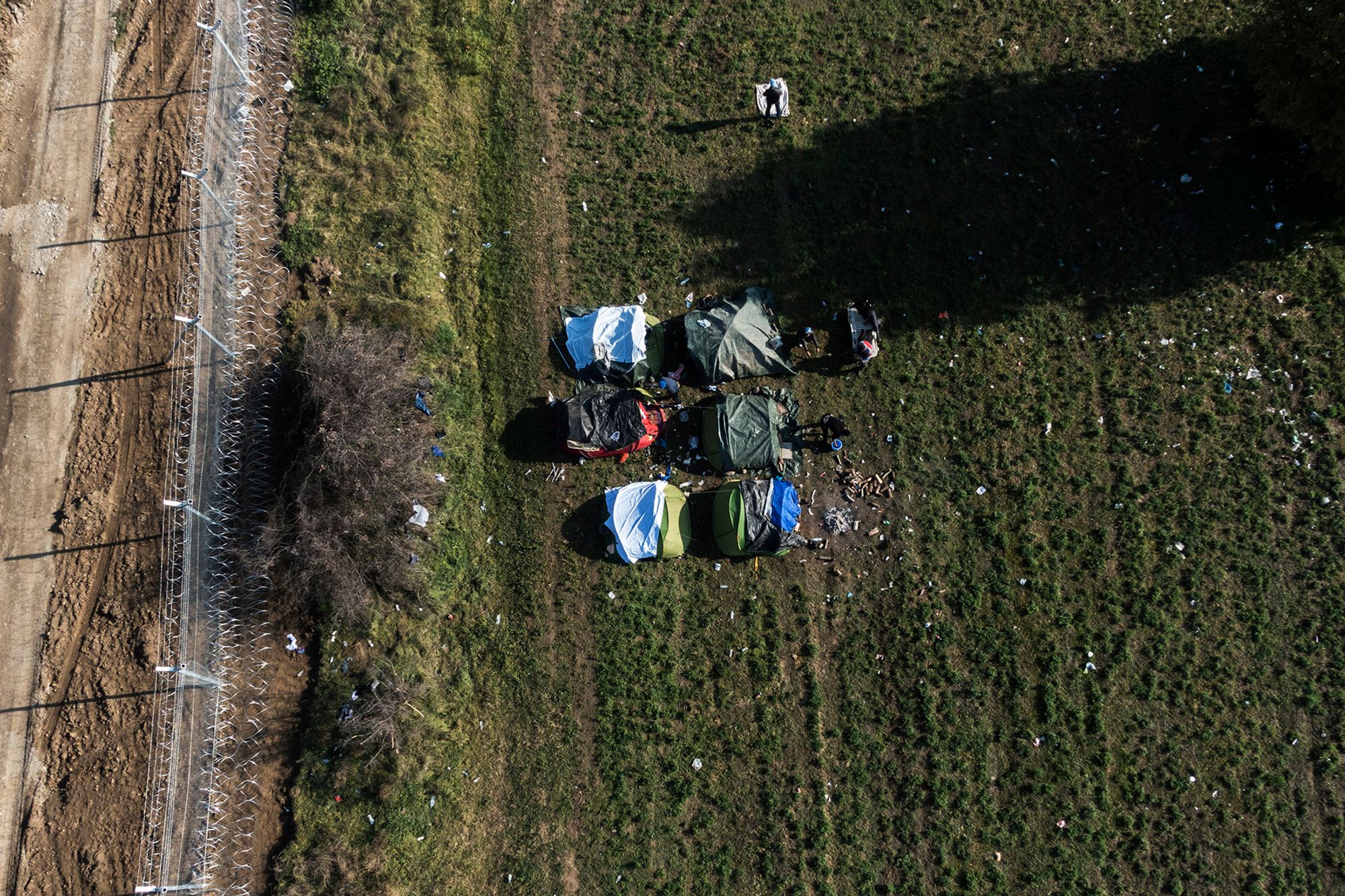
Rejected Moroccan migrants sits at their makeshift camp right beside the newly erected Macedonian border fence to Greece.
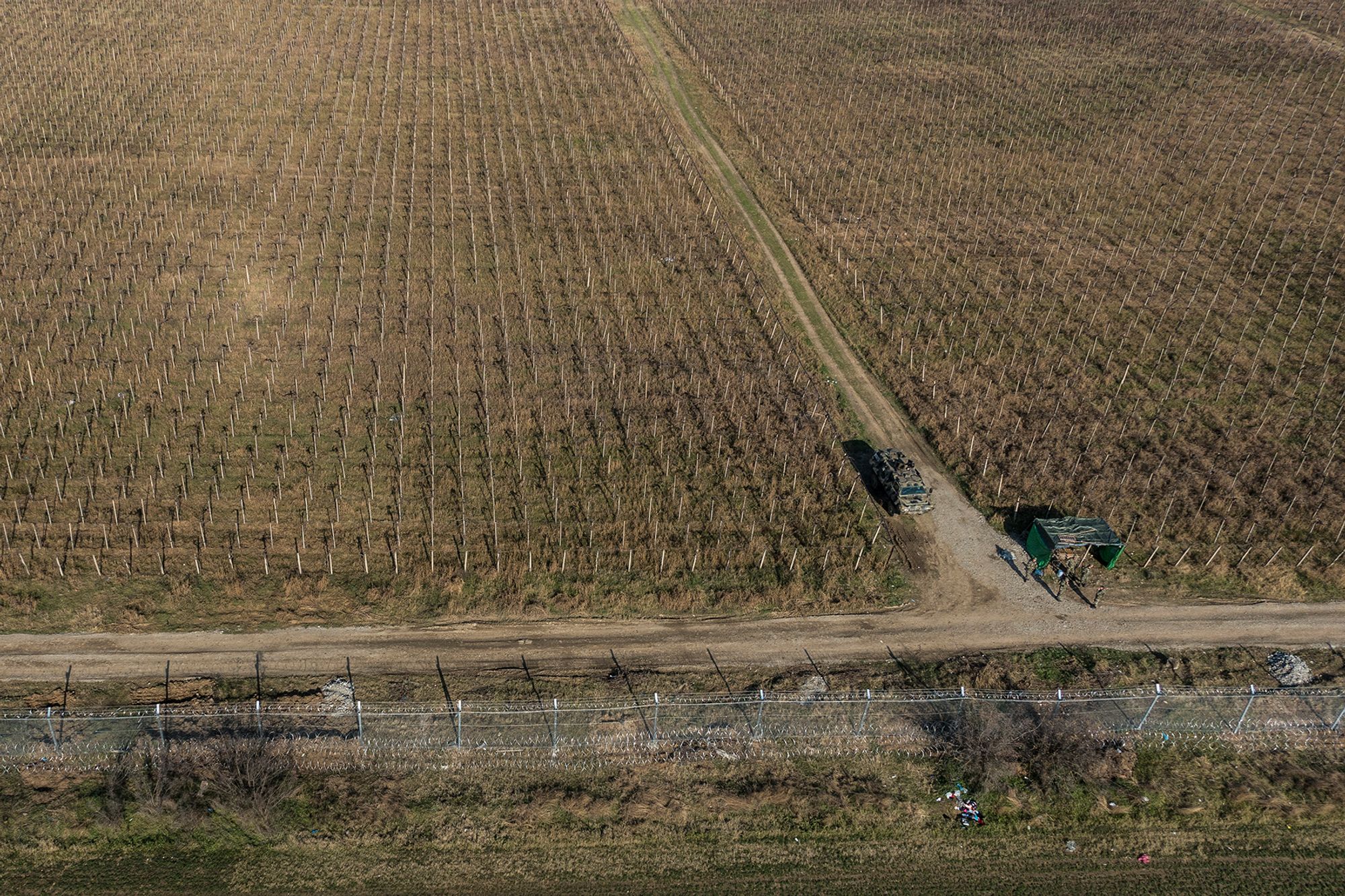
Macedonian military guards their barbed wire border fence towards Greece. They are armed with kalashnikovs and heavy machineguns.
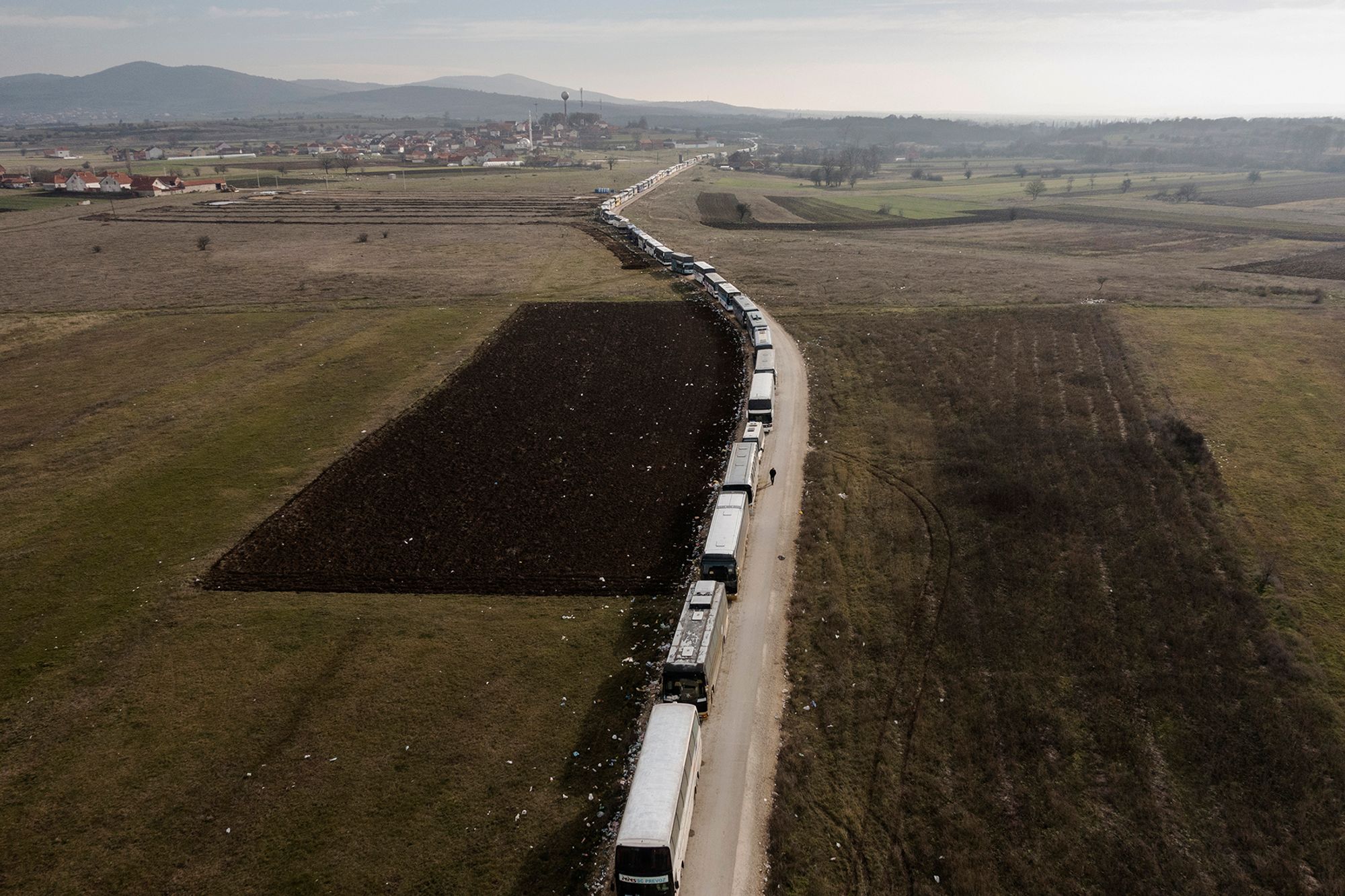
A 4 kilometer bus convoy waits outside of the reception center in Presevo, Serbia. The busses come from all the borders of Serbia and are privately owned and run, their companies often charge overprice for the tickets. Now they wait for the refugees to take them further north.
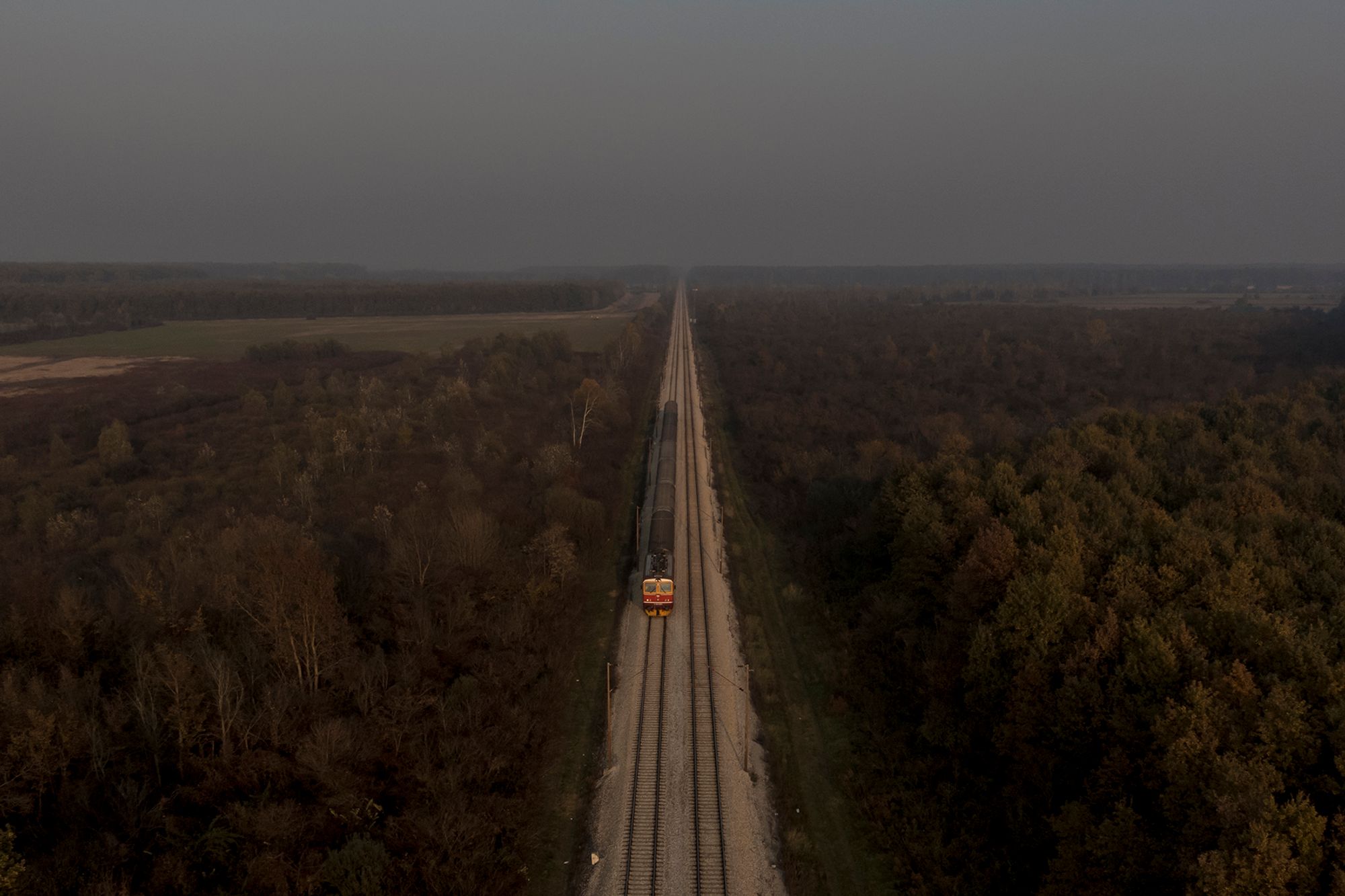
A train with 1000 refugees and migrants en route towards Croatian winter transit camp in Slavonski Brod. The Serbian and Croatians police agreed on sending 4 trains pr. day across the border putting an end to poor conditions for the refugees and migrants along their borders.

Refugees and migrants in the Croatian winter transit camp Slavonski Brod are marched towards the train that will take them to Slovenia. They have been in the camp for 5-6 hours where they have had access to hot tents, food and medical assistance.

Two migrants walks in the bufferzone. A newly made area the clearly marks The Jungle and the freeway - this zone referred by police as the buffer zone makes it easier to spot migrants trying to get near the fence.
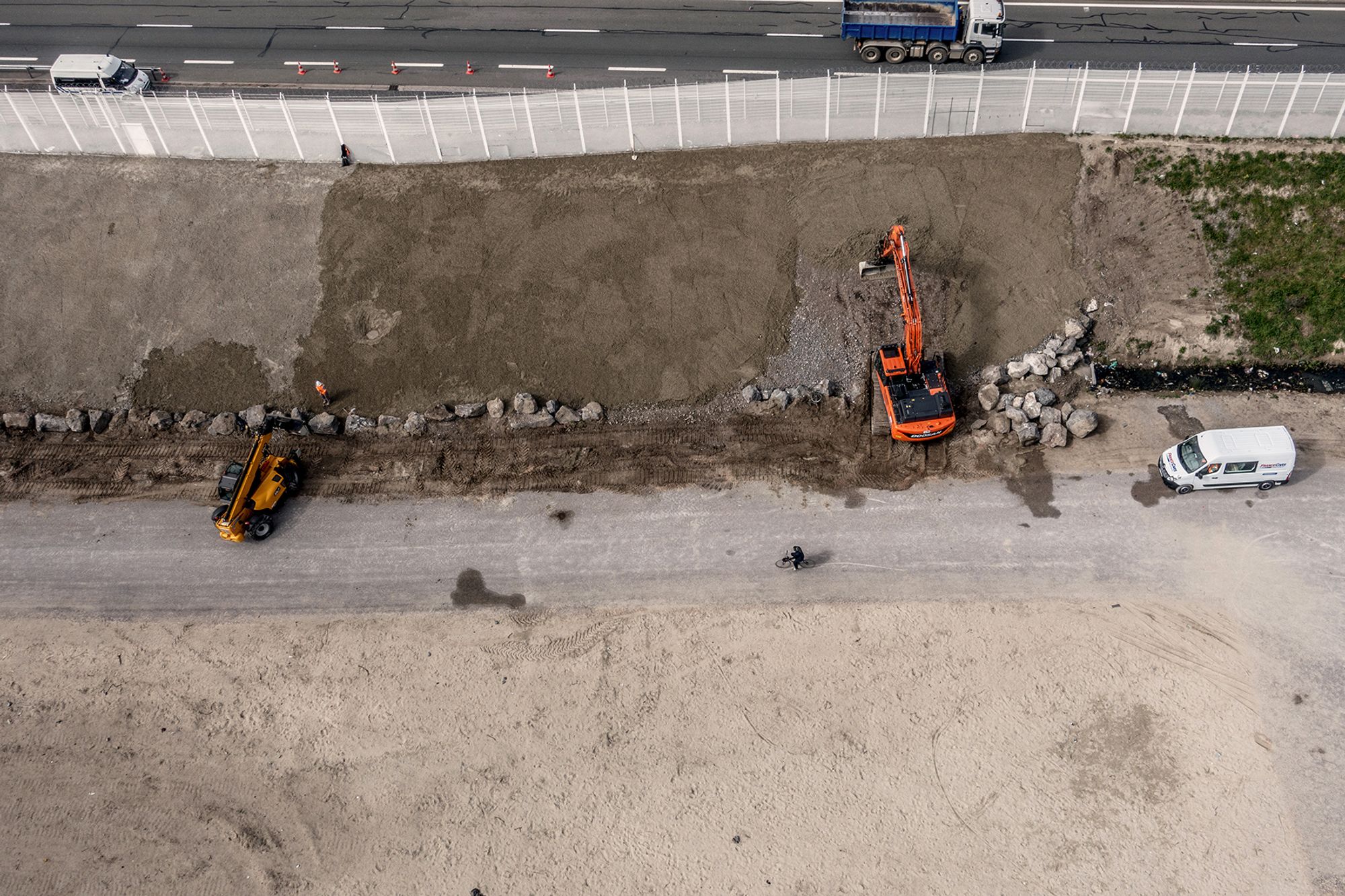
Workers maintain the fence at the edge of The Jungle in Calais. A migrants bikes past.
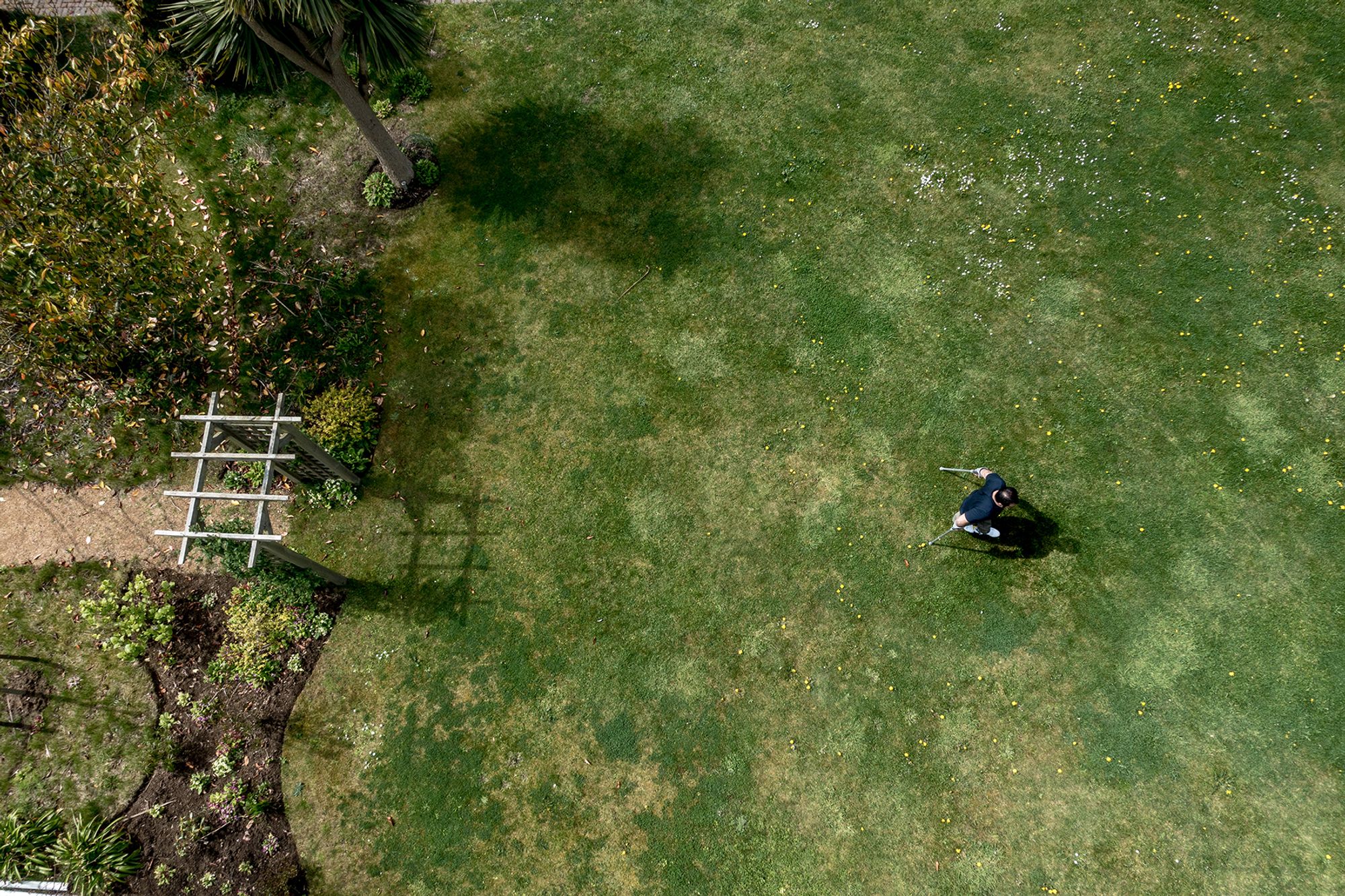
Amir walks in the garden outside his apartment on Jersey in the Channel Islands. Armir is the first official refugee to reach Jersey island but because the Island does not have any asylum laws, Amir is currently awaiting his sentence as a criminal case. Amir is paralyzed from the waist down.
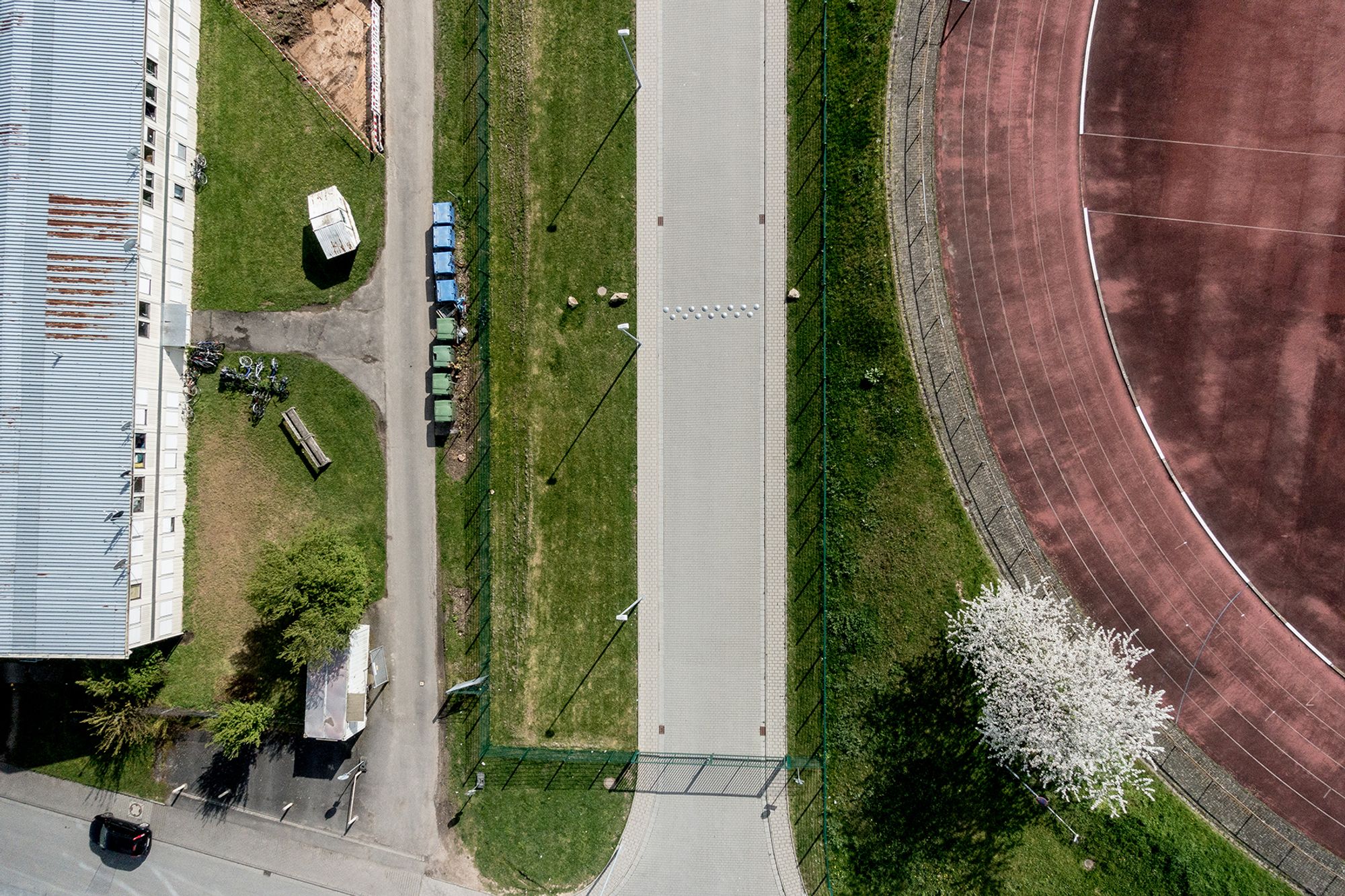
The refugee center in Oberursel, Germany have over the last 5 years received complaints about the conditions. The owner, as former Stasi-general owns many similar centers around Germany, all in the same standard. The local school next door have fenced in the entire area towards the center.
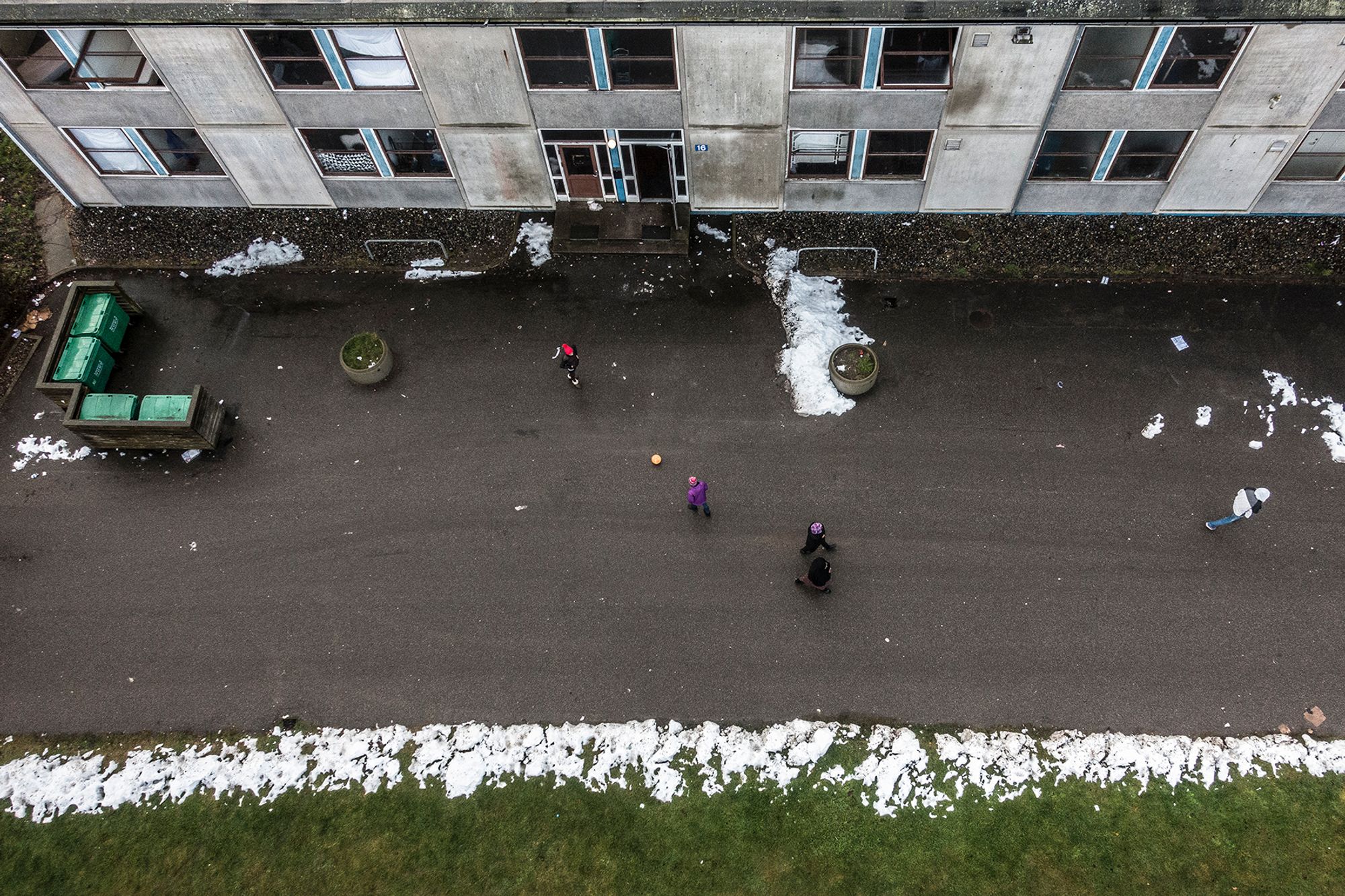
Two asylum seekers play football outside their home at the danish asylum center in Auderød.
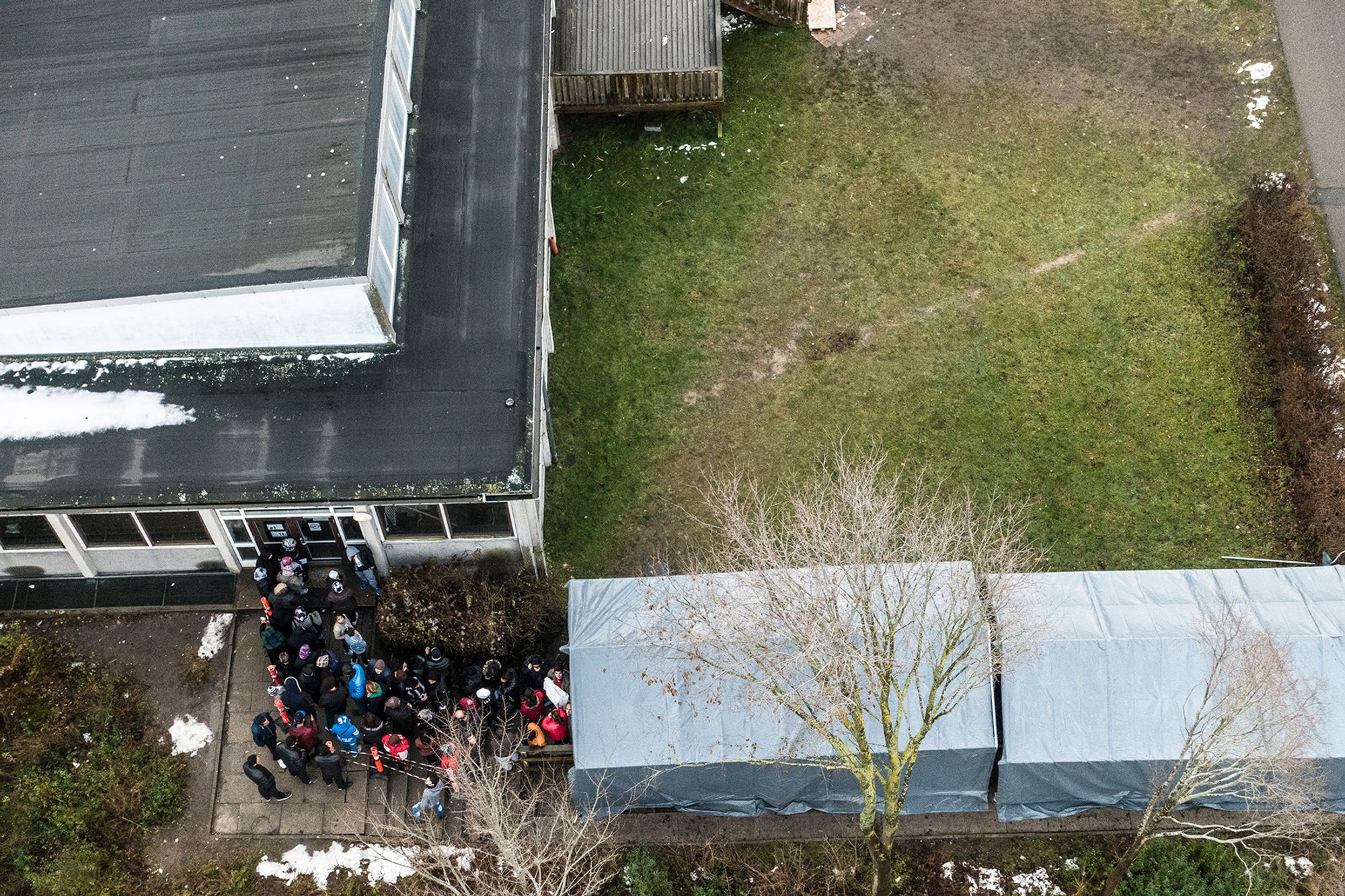
Asylum Seekers in line for their daily hot meal at the asylum center in Auderød, Denmark.
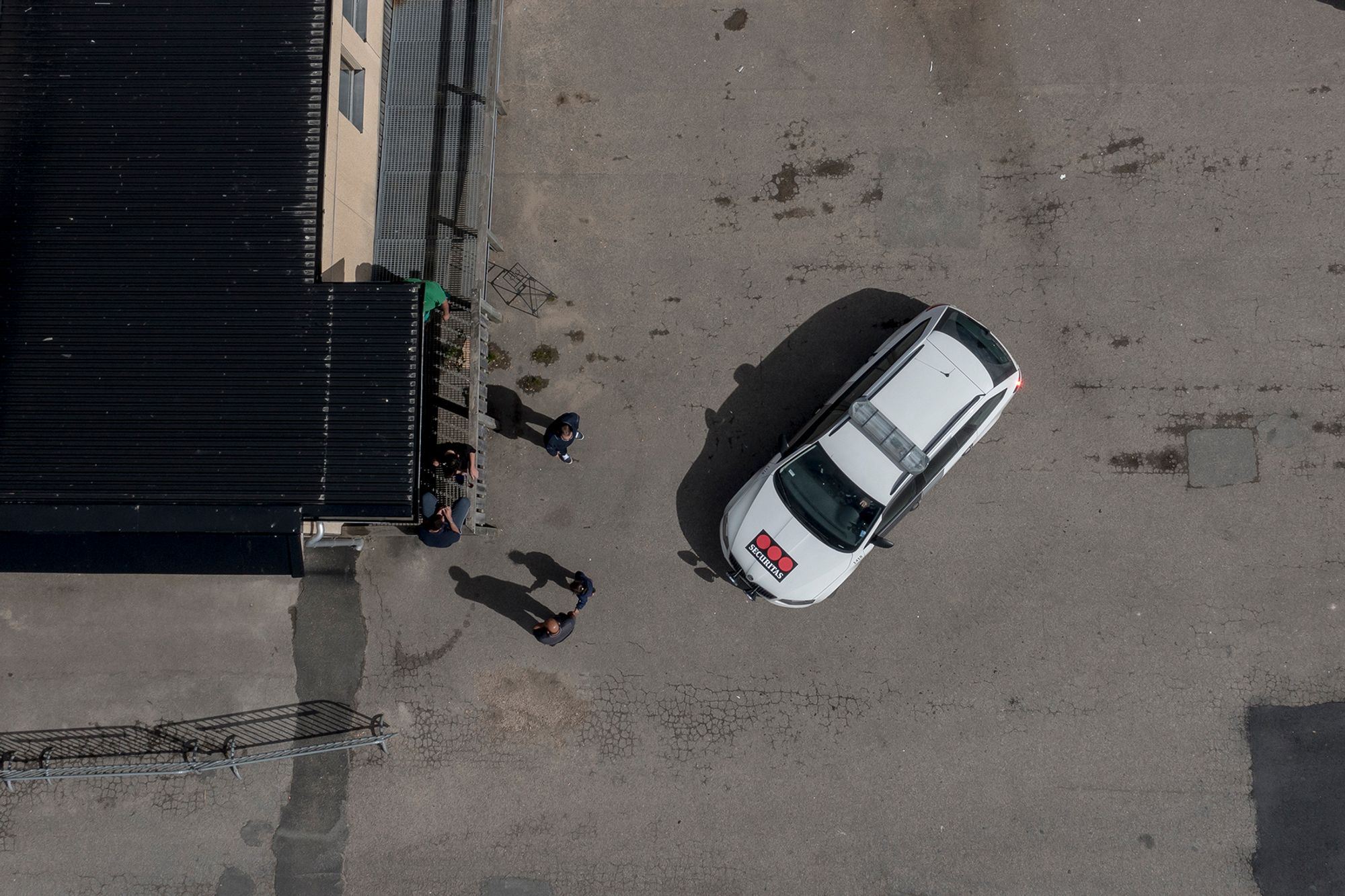
Asylum seekers stand outside their home in High Chaparral theme park, Sweden. A G4S security car patrols the area.
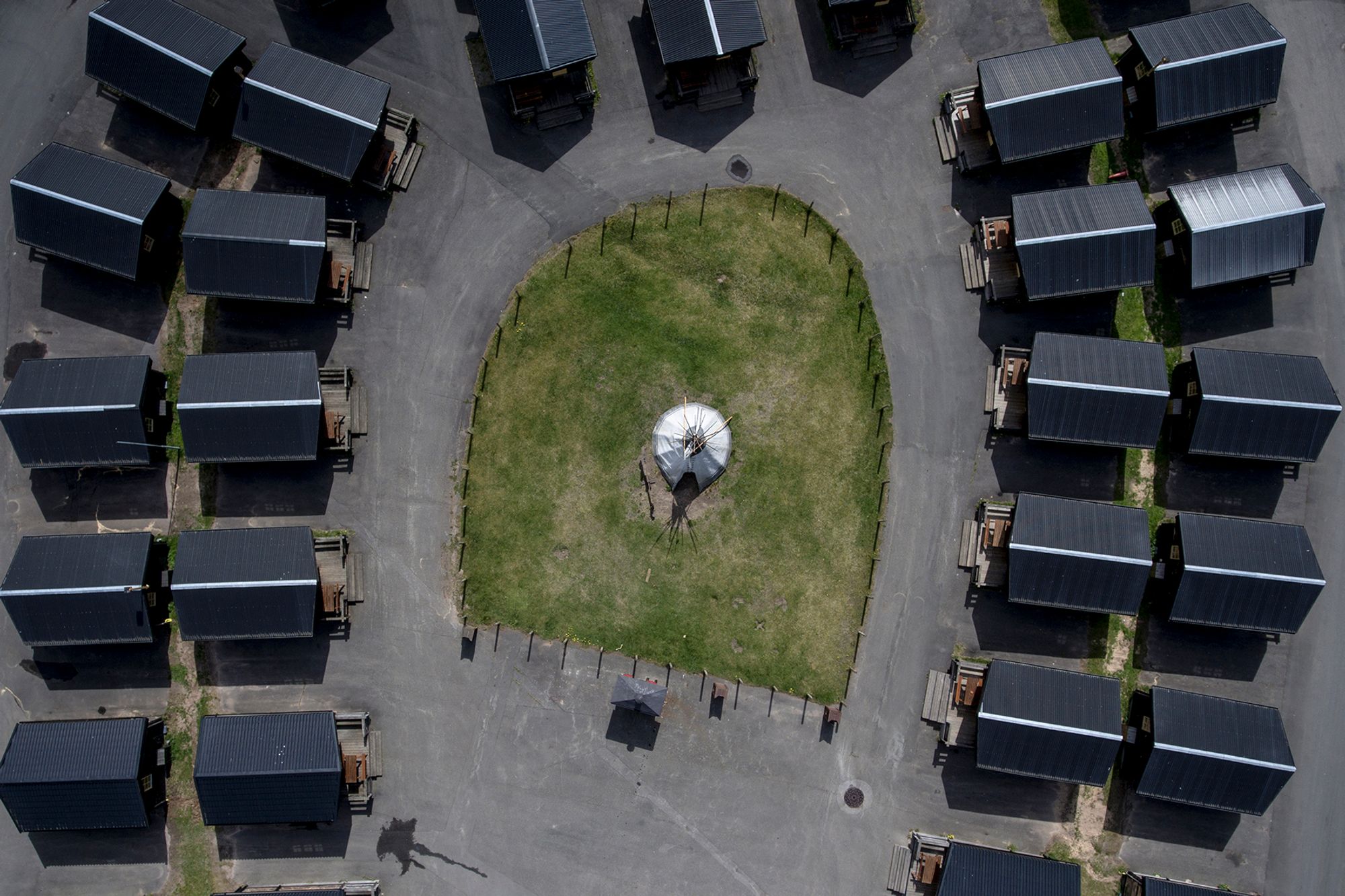
High Chaparral a wild west inspired theme park in Sweden opened up their cabins to 600 asylum seekers in the winter of 2015. They had spare beds and wanted to help.

Kånna, Sweden. The local school was arsoned on 15th October 2015 the day before it was supposed to be housing 80 asylum seekers. The police is currently investigating the arson. Sweden have been struck by countless arson attacks since receiving almost 200.000 refugees and migrants in 2015.
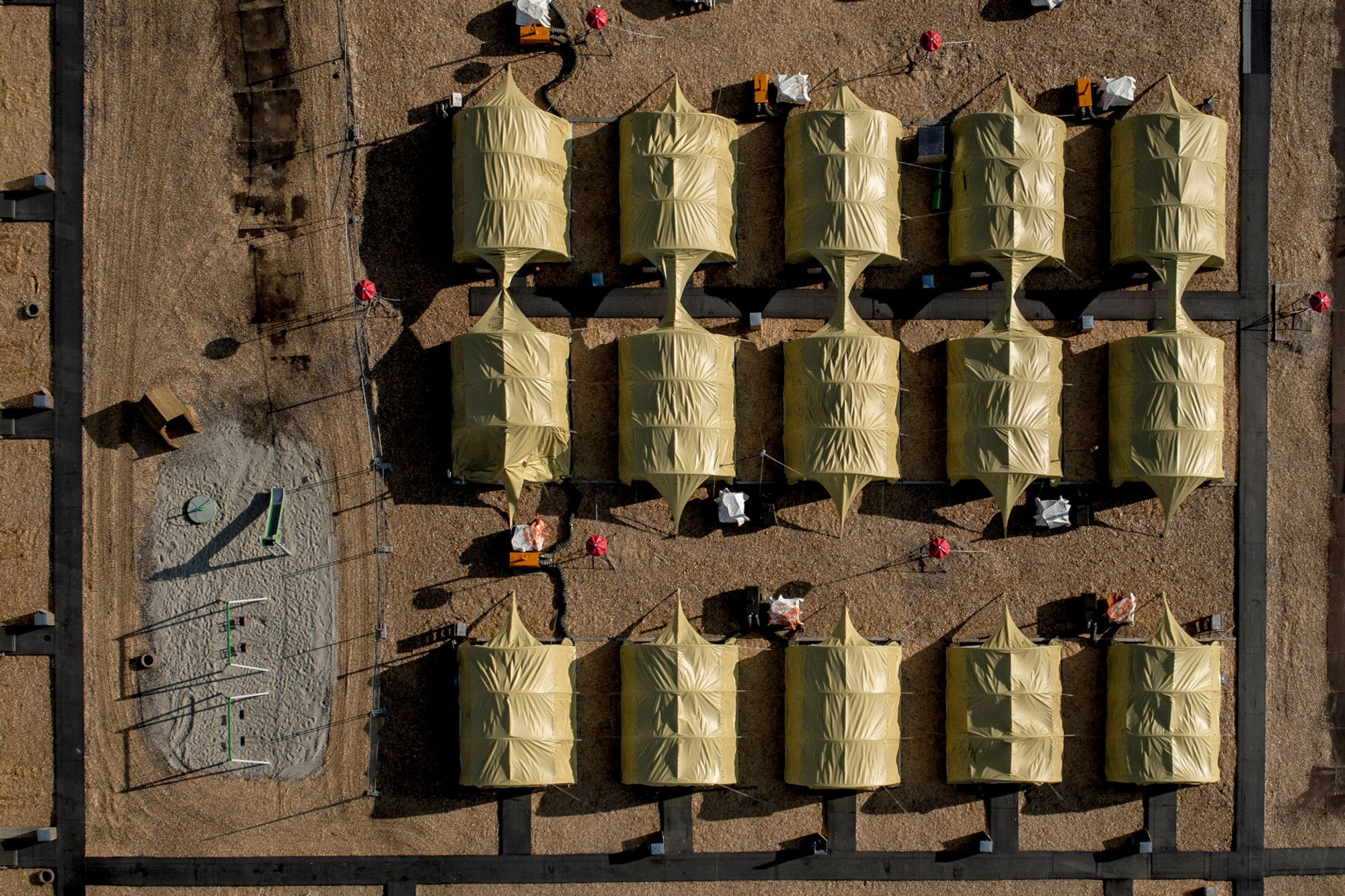
15. September 2016. The now empty asylumseekers tent-center in Haderslev, Denmark. The camp was opened in January 2016 to accomodate the rising number of asylumseekers reaching Denmark. Since the opening this camp have been highly critisized for being unnecessary as the regular Danish asylumcenter has free space. 3. September 2016 the camp was closed down and the almost 200 male inhabitants were moved to other center arounds the country.
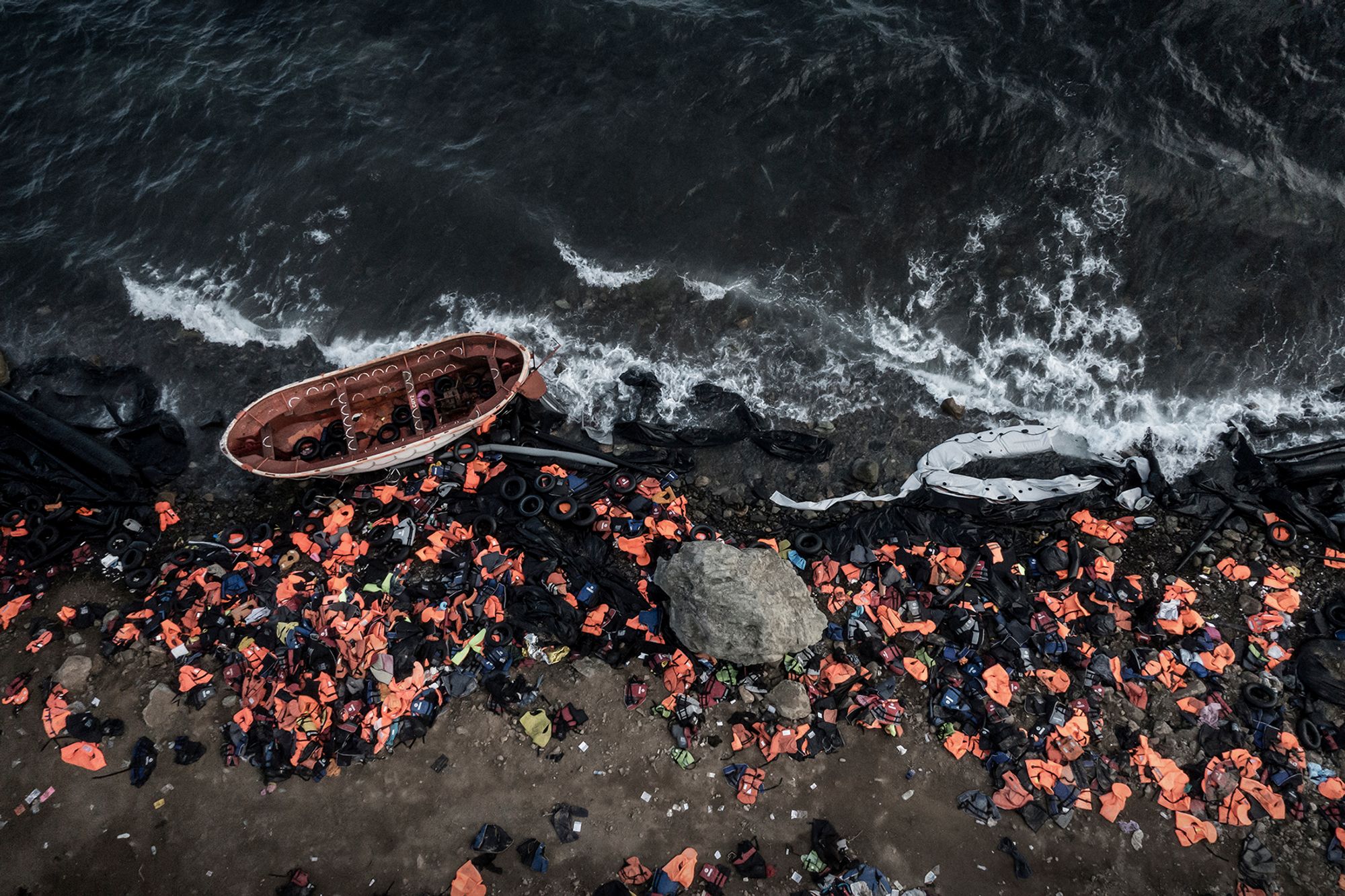
Rescue Boats, rubber dinghies and life vests lie on the beach of Greek island of Lesbos. Today there are still no solution to the continuing surge of refugees and migrants reaching the island. Some days of 2015 saw over 10.000 arriving on the island, but also some days saw over 30 dead from drowning.